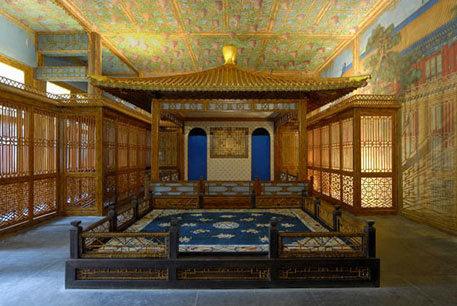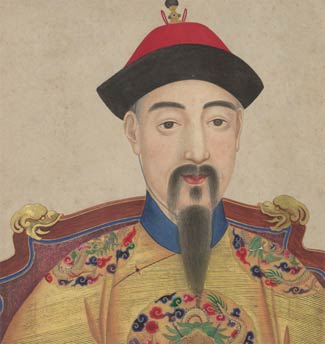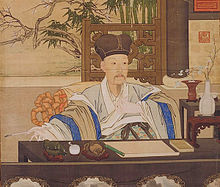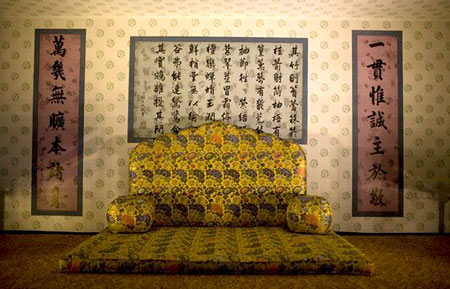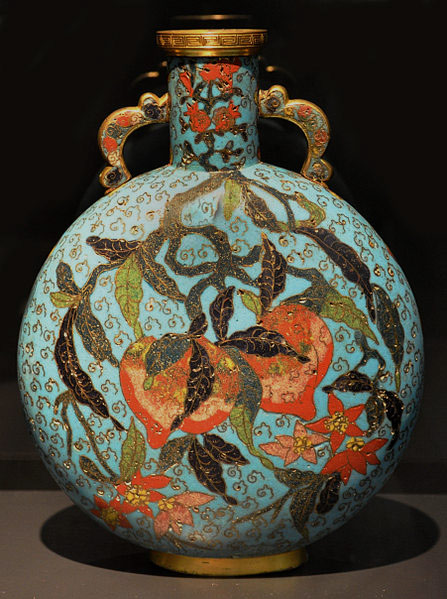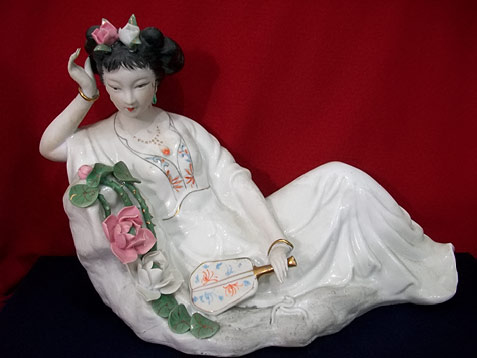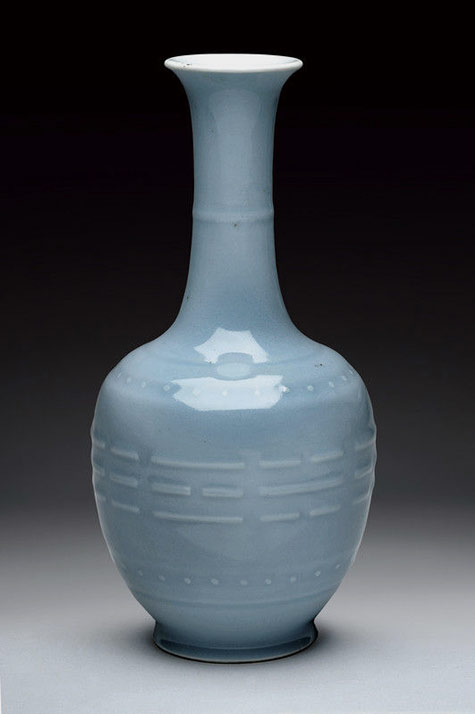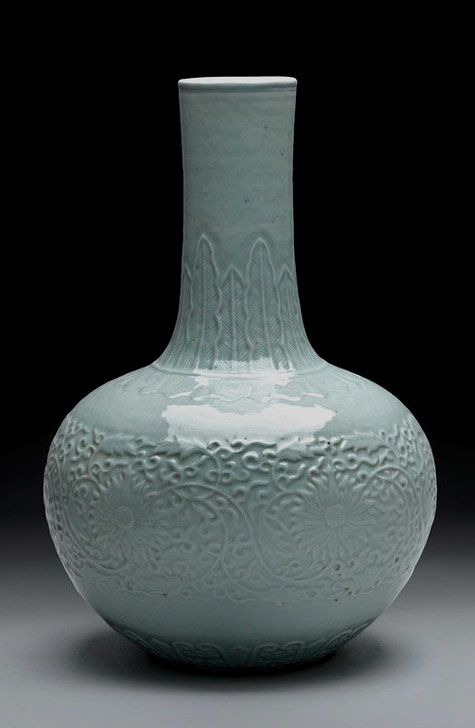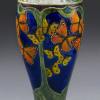The restoration of a lavish suite in the Forbidden City of the Quin Dynasty
Beijing’s sprawling Forbidden City—the size of 135 football fields—is a dizzying array of magnificent receiving halls and intimate quarters surrounded by 28-foot-thick walls. Yet in the northeast tip of the compound lies a unique two-acre retreat, known simply as the “Qianlong Garden”
For decades stories circulated among art historians of a mothballed Qing Dynasty retreat within the Forbidden City,( the Imperial behemoth with 8,700 rooms that anchors the Chinese capital}). Word eventually reached the World Monuments Fund, a nonprofit organization dedicated to saving imperiled historic sites. Six years and $3 million later the first building of the Palace of Tranquillity and Longevity ( Juanqinzhai ) had been meticulously restored ( see above ) and will open to the public in the coming months.
When restorers opened the door on the Qianlong Emperor’s favourite studio in the Forbidden City, dust three inches thick on the exquisitely carved surfaces bore testament to decades of abandonment. “It felt like the last emperor had just turned the key in the door and left,” was the verdict of one expert. The studio was built in the late 18th century as part of a bigger retirement retreat by the Qianlong Emperor. He died in 1795 before the building was completed but Juanqinzhai was finished exactly as he wanted – a mini-palace within a palace.
Originally built in 1776, during the 41st year of Qianlong’s 60-year reign, Juanqinzhai was part of a two-acre complex of ornate gardens and pavilions designed by the emperor for his own pleasure and to use as a retreat for meditation and writing poetry. The rooms of Juanqinzhai, which included a theatre, were built from the finest materials, including bamboo-threaded flooring, white jade tablets and intricately painted silk wall panels. Only a few embroidery workers from Suzhou province still know the traditional techniques of the exquisite double-sided embroidery used in this project. In the Juanqinzhai’s studio, the emperor would display his favourite gemstones, ceramics, porcelain and artwork.
The Qianlong Emperor spared no expense on construction materials for this palatial gem, whose 27 rooms were crafted of fine hardwoods lavishly inlaid with jade and porcelain. Inside, they brimmed with fantastic murals, priceless furnishings, and exotic decorative arts.
◊◊◊
When the Qianlong emperor ascended to the Chinese throne in 1736, the 25-year-old monarch was one of the richest men in the world. He could afford to indulge his appetite for the finer things in life during his more than 60 years on the throne. His reign is considered one of the greatest periods in the history of Chinese art.
The Qianlong emperor was one of the longest-reigning and most enlightened rulers of the Chinese Qing dynasty (1644-1911). The Qing were Manchurian horsemen who, like other foreign rulers, absorbed the culture and administrative system of China.
The Qianlong Emperor was a major patron of the arts, seeing himself as an important “preserver and restorer” of Chinese culture. He had an insatiable appetite for collecting, and acquired much of China’s “great private collections” by any means necessary, and reintegrated their treasures into the imperial collection. Qianlong, more than any other Manchu emperor, lavished the imperial collection with his attention and effort. The Emperor was also particularly interested in collecting ancient bronzes, bronze mirrors and seals, in addition to pottery, ceramics and applied arts such as enameling, metal work and lacquer work, which flourished during his reign.
The emperor frequently invited foreign artists to Beijing to pass on their skills to his artisans. Europeans shared their knowledge of Western painting techniques, glassware, painted enamels and cloisonne. Mughal craftsmen from northern India were summoned to the palace workshops for their expertise in carving jade and glass.
The extravagance of the Qianlong Emperor was so great that he ultimately bankrupted the country. As the Taoists like to claim : “Like the yin and yang cycle of life; when one attains the maximum yang, there is only one direction to go.”
Qianlong began his reign with about 33,950,000 taels of silver in Treasury surplus. At the peak of Qianlong’s reign, around 1775, even with further tax cuts, the treasury surplus still reached 73,900,000 taels, a record unmatched by his predecessors, Kangxi or Yongzheng both of whom had implemented remarkable tax cut policies
However, due to numerous factors such as long term embezzlement and corruption by officials, frequent expeditions South, huge palace constructions, many war and rebellion campaigns as well as his own extravagant lifestyle, all of these cost the treasury a total of 150,200,000 silver taels.This, coupled with his senior age and the lack of political reforms, ushered the beginning of the gradual decline and eventual demise of the Qing dynasty and empire, casting a shadow over his glorious and brilliant political life.
All the designs from the palace workshops in Beijing, which produced wares for the imperial family, were required to pass official muster. Therefore, most of the works produced during his reign were a fair representation of the emperor’s taste, which some claim reflects a near pinnacle of Chinese art.
Ceramic art from the Qianlong era :
Qianlong Celadon Vase (1736-1795)
Circular mouth, short neck, tall and square body, foot ring. The surface of the glaze is covered with a fine craquelé with sharp lines and a clear stratification with equally beautiful shallow and deep cracks. The four sides of the vase have the eight trigrams (bagua) in convex relief.
Rectangular baluster shaped vase with tubular ears and ‘happiness’ and ‘longevity’ in underglaze blue
Vases with tubular ears are replicas of the touhu of the Han era: a type of pot used in a drinking game. These vases were current under the Song and also reproduced in the kilns at Jingdezhen under the Qing.
![]() A fine porcelain from the reign of the Qianlong Emperor (1711-1799 CE) of the Qing dynasty. (Courtesy of the National Palace Museum)
A fine porcelain from the reign of the Qianlong Emperor (1711-1799 CE) of the Qing dynasty. (Courtesy of the National Palace Museum)
Emperor QianLong liked drinking tea his whole life, this is one of his favoured purple teapots.
![]() A vase with eight auspicious Buddhist emblems in fencai on turquoise.
A vase with eight auspicious Buddhist emblems in fencai on turquoise.
This model is called a bumba vase after a type of ritual metal ewer used in monasteries and temples in the Tibetan region. They were used in the designation and succession of ‘living Buddhas and prodigies’: Dalai Lamas and Panchen Lamas. They stand witness to the intimate ties between the Qing court and Tibetan Buddhism as well as their mutual historical influences: a sort of cultural osmosis between the Chinese and the Tibetan world.
![]() This brush stand in underglaze blue is a hollow parallelepiped with five round openings and one rectangular opening on top. The spaces between the openings are decorated with auspicious clouds in the shape of the classical Chinese character . The four sides have been painted with the ‘Eight Immortals’.
This brush stand in underglaze blue is a hollow parallelepiped with five round openings and one rectangular opening on top. The spaces between the openings are decorated with auspicious clouds in the shape of the classical Chinese character . The four sides have been painted with the ‘Eight Immortals’.
![]() A famille-rose vase, with the seal mark of the Qianlong Emperor (1736-1795). The vase sold at a Hong Kong auction for HK$252.7 million ($32.6 million) and was bought by collector Alice Cheng.
A famille-rose vase, with the seal mark of the Qianlong Emperor (1736-1795). The vase sold at a Hong Kong auction for HK$252.7 million ($32.6 million) and was bought by collector Alice Cheng.
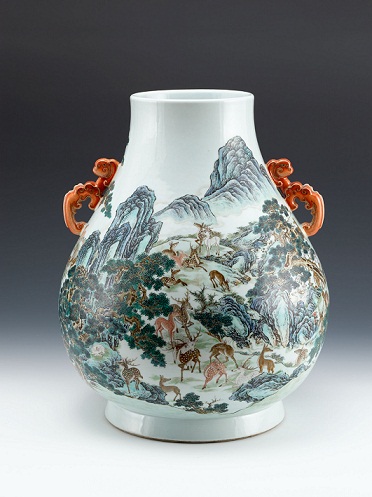 Vase with ears in the shape of hornless dragons and a hundred deer in fencai
Vase with ears in the shape of hornless dragons and a hundred deer in fencai
This hundred deer vase has been painted with a forest full of deer frolicking between green pines and cypresses, cragged rocks and flowing creeks.
Vase with figures of playing children and Indian lotus scrolls in fencai on red
Fencai (literally: ‘pastel colours’) is a type of overglaze decoration fired at low temperature. It has been produced from the times of the Qing emperor Kangxi. Firstly, the white clay is covered with a layer of glaze and fired at high temperature. Next, a polychromatic painting is applied and fired at less than 700oC.
![]() Qianlong Melon-shaped vase with imitation celadon glaze (fangru) with 8 sets of vertical bow strings.
Qianlong Melon-shaped vase with imitation celadon glaze (fangru) with 8 sets of vertical bow strings.
![]() Ritual Water Vessels. Photo by Mharrsch( Flickr)
Ritual Water Vessels. Photo by Mharrsch( Flickr)
 Qing Dynaasty Yellow Porcelain Enameled Vase, Jordan Schnitzer Museum of Art. Photo by Mharrsch
Qing Dynaasty Yellow Porcelain Enameled Vase, Jordan Schnitzer Museum of Art. Photo by Mharrsch
![]() Carved Dragon Purple Amethyst Glass cup
Carved Dragon Purple Amethyst Glass cup
Pilgrim flask decorated with peaches and pomegrenates; Ming Dynasty, 1st half of 17th century
Museum Rietberg, Zurich
Porcelain figurine
An Exceptionally Rare Blue-Glazed Flask-Form Ming Vase.
Christie’s Images
A ”clair de lune” Qing dynasty porcelain vase .
Translucent, sky blue glaze of great quality. ( Photo Czerny’s )
Qianlong porcelain vase.
18th century
Photo Czerny


